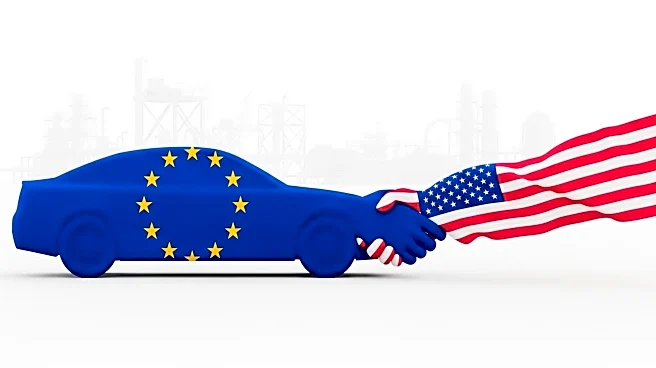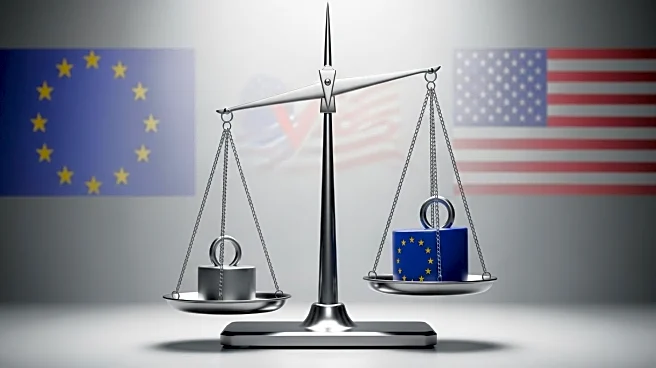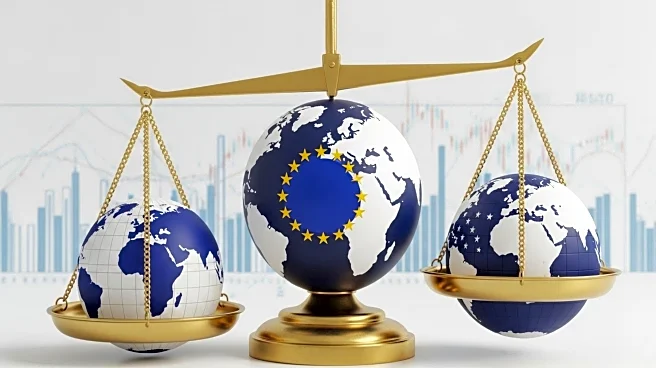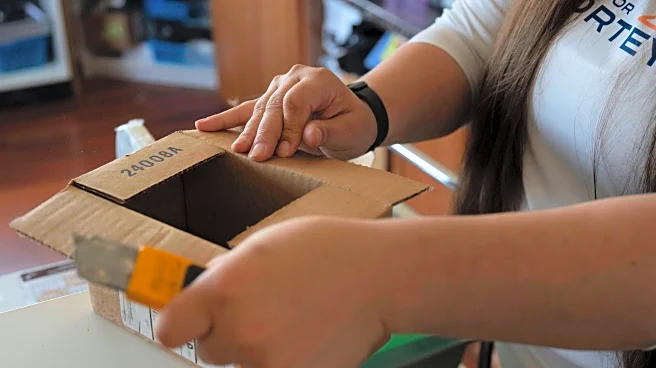What's Happening?
The United States and the European Union have reached a framework agreement on trade that includes a proposal for mutual recognition of each other's auto safety and emissions standards. This agreement could potentially expand the export of American vehicles to Europe, which currently do not meet EU standards. The proposal is part of broader trade negotiations aimed at reducing barriers and enhancing economic cooperation between the two regions. The agreement reflects ongoing efforts to harmonize regulatory standards and facilitate cross-border trade in the automotive sector.
Why It's Important?
The mutual recognition of auto standards between the U.S. and EU could have significant implications for the automotive industry. For U.S. automakers, this agreement presents an opportunity to increase exports to the European market, potentially boosting sales and revenue. It also underscores the importance of regulatory alignment in facilitating international trade and reducing compliance costs for manufacturers. However, the agreement may face challenges from stakeholders concerned about safety and environmental standards. The outcome of these negotiations could influence future trade policies and set a precedent for other sectors seeking regulatory harmonization.
What's Next?
As the framework agreement progresses, stakeholders will closely monitor its implementation and impact on the automotive industry. U.S. automakers may need to adjust their production and marketing strategies to capitalize on new export opportunities. Regulatory bodies in both regions will work to ensure that mutual recognition does not compromise safety and environmental standards. The agreement's success could pave the way for similar initiatives in other industries, promoting greater economic integration and cooperation between the U.S. and EU.













